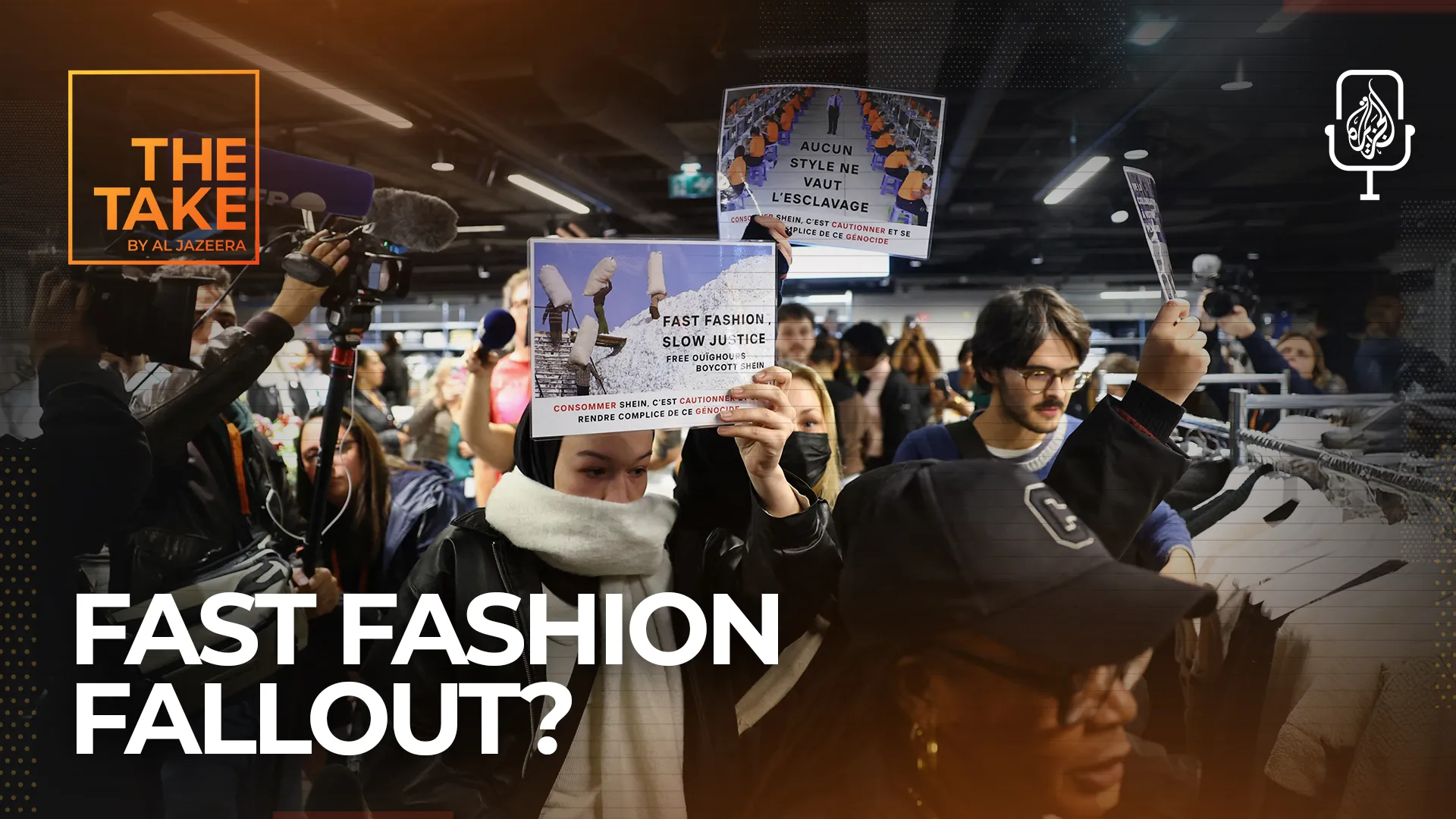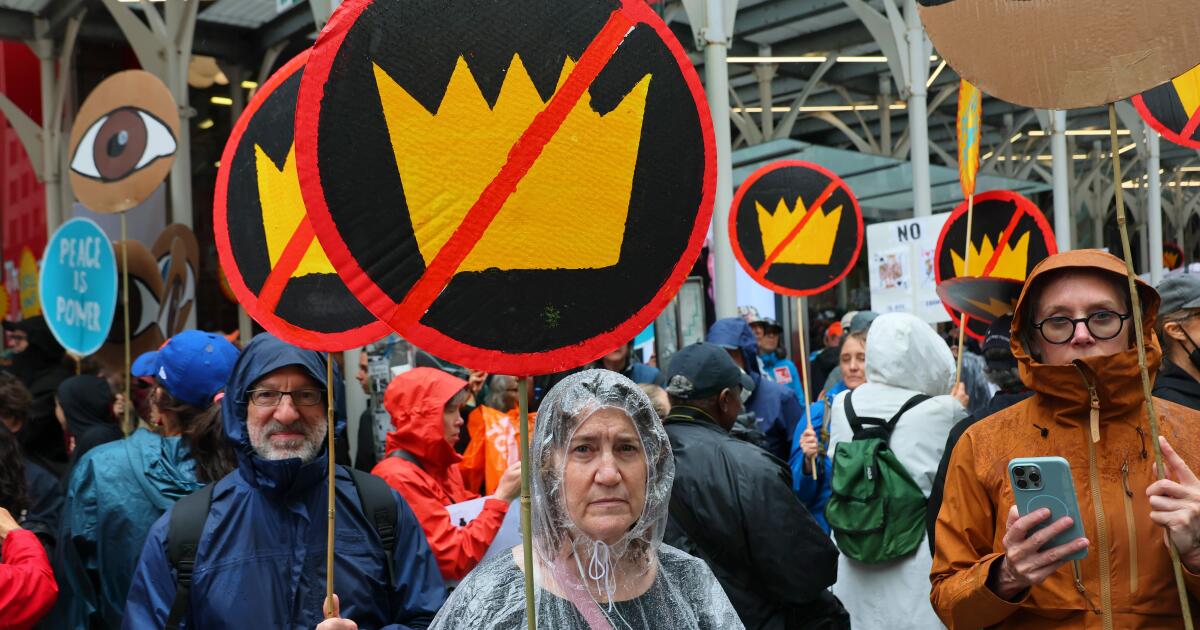SpaceX cuts Starlink service to Myanmar scams compounds

Oct. 23 (UPI) — SpaceX cut Starlink Internet service to thousands of its devices providing access to compounds in Myanmar linked to human trafficking and monetary scams worldwide.
The company said late Tuesday that it terminated more than 2,500 Starlink devices Chinese crime syndicates were using to contact and scam people globally.
“SpaceX continually works to identify violations of our Acceptable Use Policy and applicable law because — as with nearly all consumer electronics and services — the same technology that can provide immense benefits has a risk of misuse,” Lauren Dreyer, Starlink’s vice president of business operations, said in a post on X.
“In Myanmar, for example, SpaceX proactively identified and disabled over 2,500 Starlink kits in the vicinity of suspected ‘scam centers,'” she wrote.
The scam centers, which operated largely along the border between Myanmar and Thailand, lure people in with the promise of good jobs before often being taken captive and being forced to defraud people through fake investments and pretend romantic schemes, according to reports.
Myanmar’s military, which in 2021 staged a coup that has kept the country mired in a civil war, announced this week that it shut down a scam operation called KK Park, seizing 30 sets of Starlink Terminals and arresting more than 2,000 people.
The military earlier this year launched an operation to go after the scam centers after other nations, specifically Thailand and China, exerted pressure to ease the situation that has seen people from both countries trafficked and forced to work in the scam parks.
Although the military has moved to shut down some operations, reports suggest that many compounds in Myanmar remain active, with tens of thousands of employees and some protected by militia groups that are aligned with Myanmar’s military.
One of Britain’s best-loved coastal towns to get a bigger beach from next month
THE south of England has some incredibly popular beaches, and one is getting even bigger in time for next summer.
From next month, work is starting on the beach in Brighton and Hove to protect it from erosion and that’s great news for holidaymakers – because let’s face it… size matters.
Brighton and Hove is a one of the busiest spots in the UK with 11 million people visiting every year.
Worries about flooding and erosion across the busy Brighton and Hove seafront have led to new plans involving adding new groynes and extending the shingle beach.
Starting in late November or early December, a new groyne field will be built on the beach between the King Alfred Leisure Centre and Second Avenue in Hove.
The new timber groynes will be supported by filling the bays between each one with thousands of tonnes of shingle – which has been dredged from a site in the English Channel.
Effectively, this will slow the movement of shingle along the coastline, helping to protect the area from flooding and erosion.
It will also reduce the amount of shingle which washes up onto the promenade during storms and high tides.
What’s probably more interesting for tourists is that the plans will see the beach extended by approximately 25 metres out to sea.
Not only does this mean the beach will be better protected, but it will create more room for tourists during busy seasons.
There’s a public engagement event taking place today (23 October) so locals can learn more about this phase of the scheme.
The work is scheduled to finish next year so by summer.
Following that, the next phase of the plan is the rebuilding of sea defences on Southwick beach which is set to be complete in 2027.
Councillor Trevor Muten, cabinet member for transport and public realm, said: “This scheme is vital for the city, to safeguard homes and businesses from coastal flooding and protect our local economy for decades to come. By taking action now, we will help make our city more climate resilient and able to adapt to increasing storms, extreme rainfall and rising sea levels.
“We are committed to value for money to deliver the best for our city. £4.5 million is a substantial sum but our local visitor economy alone is worth £5 billion.”
That’s not the only work that has been taking place in Hove – the Kingsway to the Sea project, also known as Hove Beach Park has been underway since around 2023.
The project has seen the construction of a skate and pump track, padel tennis courts, and a new tennis pavilion which opened last year.
The project has focused on creating landscaped gardens and making new pathways at a cost of £13.7million.
There will be an official opening in spring 2025 when the majority of the project will be complete.
Brighton and Hove isn;t just about the beach though.
It’s also famous for shopping in The Lanes, Brighton Palace Pier, beachfront, and the Royal Pavilion.
There’s lots of nightlife, and plenty of pubs – in fact, Brighton & Hove has the most pubs in the UK per person.
Sun Travel‘s favourites include The Station Inn, The Tempest Inn and Hove Place , which has a beautiful Italian-inspired garden.
Brighton is also home to Volk’s Electric Railway, which is the world’s oldest operating electric railway – and it’s right on the front of Brighton Beach.
It’s been operating since 1883 which makes it over 140 years old and is still going today.
One Sun Writer recommends a visit to this beach club in Hove whatever the weather…

HOVE is the vibey neighbour of the popular Brighton – and my top choice for a weekend break.
It’s more relaxed, still with a pretty pebble coastline and blue waters, but much quieter. On Friday afternoon, just under two hours from my home in Hertfordshire, I hit Brighton.
The seaside town that everyone knows and loves for its sea lanes, pop-up market stalls, quirky creatives and music scene.
It was immediately quieter with a notable absence of Brighton’s squawking seagulls. Hove still retains its beach charm, and in fact, it’s recently been named one of the best seaside towns to live in.
Almost as soon as I hit Hove, I discovered a gem of a beach club called Rockwater.
Rustic-looking on the outside, Rockwater completely blends in with its surroundings with wooden slatted exterior, huge glass windows, and the inside is spectacular.
It has plush chairs, a beautiful bar and a holiday-like atmosphere – imagine the sun shining through open windows, the clinking of glasses and happy tourist chatter.
You might think beach bars are just for summer, but this one has lots of activities all year round from relaxing yoga to book socials, sip and paint – and of course, plenty of Christmas fun.
In Brighton you’ll find one of the UK’s most popular seaside towns has California-like beach bar named one of the best in the country.
Plus, one of the UK’s most popular seaside towns is set to get new train station revamp in huge ‘spruce up’.
Will Trump’s sanctions against Russian oil giants hurt Putin? | Business and Economy News
Washington has announced new sanctions against Russia’s two largest oil companies, Rosneft and Lukoil, in an effort to pressure Moscow to agree to a peace deal in Ukraine. This marks the first time the current Trump administration has imposed direct sanctions on Russia.
Speaking alongside Nato Secretary-General Mark Rutte in the Oval Office on Wednesday, US President Donald Trump said he hoped the sanctions would not need to be in place for long, but expressed growing frustration with stalled truce negotiations.
Recommended Stories
list of 4 itemsend of list
“Every time I speak to Vladimir [Putin], I have good conversations and then they don’t go anywhere. They just don’t go anywhere,” Trump said, shortly after a planned in-person meeting with his Russian counterpart, Vladimir Putin, in Budapest was cancelled.
Trump’s move is designed to cut off vital oil revenues, which help fund Russia’s ongoing war efforts. Earlier on Wednesday, Russia unleashed a new bombardment on Ukraine’s capital, Kyiv, killing at least seven people, including children.
US Treasury Secretary Scott Bessent said the new sanctions were necessary because of “Putin’s refusal to end this senseless war”. He said that Rosneft and Lukoil fund the Kremlin’s “war machine”.

How have Rosneft and Lukoil been sanctioned?
The new measures will freeze assets owned by Rosneft and Lukoil in the US, and bar US entities from engaging in business with them. Thirty subsidiaries owned by Rosneft and Lukoil have also been sanctioned.
Rosneft, which is controlled by the Kremlin, is Russia’s second-largest company in terms of revenue, behind natural gas giant Gazprom. Lukoil is Russia’s third-largest company and its biggest non-state enterprise.
Between them, the two groups export 3.1 million barrels of oil per day, or 70 percent of Russia’s overseas crude oil sales. Rosneft alone is responsible for nearly half of Russia’s oil production, which in all makes up 6 percent of global output.
In recent years, both companies have been hit by rolling European sanctions and reduced oil prices. In September, Rosneft reported a 68 percent year-on-year drop in net income for the first half of 2025. Lukoil posted an almost 27 percent fall in profits for 2024.
Meanwhile, last week, the United Kingdom unveiled sanctions on the two oil majors. Elsewhere, the European Union looks set to announce its 19th package of penalties on Moscow later today, including a ban on imports of Russian liquefied natural gas.
How much impact will these sanctions have?
In 2022, Russian oil groups (including Rosneft and Lukoil) were able to offset some of the effects of sanctions by pivoting exports from Europe to Asia, and also using a “shadow fleet” of hard-to-detect tankers with no ties to Western financial or insurance groups.
China and India quickly replaced the EU as Russia’s biggest oil consumers. Last year, China imported a record 109 million tonnes of Russian crude, representing almost 20 percent of its total energy imports. India imported 88 million tonnes of Russian oil in 2024.
In both cases, these are orders of magnitude higher than before 2022, when Western countries started to tighten their sanctions regime on Russia. At the end of 2021, China imported roughly 79.6 million tonnes of Russian crude. India imported just 0.42 million tonnes.
Trump has repeatedly urged Beijing and New Delhi to halt Russian energy purchases. In August, he levied an additional 25 percent trade tariff on India because of its continued purchase of discounted Russian oil. He has so far demurred from a similar move against China.
However, Trump’s new sanctions are likely to place pressure on foreign financial groups which do business with Rosneft and Lukoil, including the banking intermediaries which facilitate sales of Russian oil in China and India.
“Engaging in certain transactions involving the persons designated today may risk the imposition of secondary sanctions on participating foreign financial institutions,” the US Treasury Department’s press release on Wednesday’s sanctions says.
As a result, the new restrictions may force buyers to shift to alternative suppliers or pay higher prices. Though India and China may not be the direct targets of these latest restrictions, their oil supply chains and trading costs are likely to come under increased pressure.
“The big thing here is the secondary sanctions,” Felipe Pohlmann Gonzaga, a Switzerland-based commodity trader, told Al Jazeera. “Any bank that facilitates Russian oil sales and with exposure to the US financial system could be subject.”
However, he added, “I don’t think this will be the driver in ending the war, as Russia will continue selling oil. There are always people out there willing to take the risk to beat sanctions.
“These latest restrictions will make Chinese and Indian players more reluctant to buy Russian oil – many won’t want to lose access to the American financial system. [But] it won’t stop it completely.”
According to Bloomberg, several senior refinery executives in India – who asked not to be named due to the sensitivity of the issue – said the restrictions would make it impossible for oil purchases to continue.
On Wednesday, Trump said that he would raise concerns about China’s continued purchases of Russian oil during his talk with President Xi Jinping at the 2025 Asia-Pacific Economic Cooperation summit in South Korea next week.

Have oil prices been affected?
Oil prices rallied after Trump announced US sanctions. Brent – the international crude oil benchmark – rose nearly 4 percent to $65 a barrel on Thursday. The US Benchmark, West Texas Intermediate, jumped more than 5 percent to nearly $60 per barrel.
Pohlmann Gonzaga, however, predicted that the “market will correct from this 5 percent over-jump. You have to recall that sentiment in energy markets is still negative due to the gloomy [global] economic backdrop.”
Hidden gem holiday hotspot with stunning lake and thousands of islands A-listers love
Tom Hanks is one of several celebrities who have fallen for the charm of Muskoka in Ontario, Canada, a region filled with thousands of lakes and tens of thousands of craggy islands
When you consider Hollywood getaways, you might envision classic destinations like Italy’s Portofino, Monte Carlo, or the Hamptons, but Tom Hanks appears to have discovered the ideal spot for a tranquil retreat, well away from bustling beaches and heaving resorts.
Boasting thousands of lakes and countless rugged islands, the relatively unknown Muskoka region in Ontario, Canada, has attracted the star for serene and scenic breaks before the masses discover it.
It’s a realm of tranquil azure waters, small wooded islets, and timber boathouses that feels worlds apart from Hollywood and mirrors the Lake District but amplified, minus the coach parties and with far superior weather.
Merely two hours from Toronto, Muskoka spans an enormous area of central Ontario, peppered with over 1,500 lakes and encircled by coniferous woodlands.
It’s frequently dubbed “the Hamptons of the North”, owing to its blend of wilderness splendour and waterside opulence, reports the Express.
The ambience here is considerably more relaxed than what you’d experience in that exclusive New Jersey enclave.
You’re far more apt to spot families paddling canoes or toasting marshmallows beside a bonfire than moored, ostentatious vessels with champagne flowing.
Tom Hanks is amongst numerous celebrities who’ve been captivated by the region’s allure.
Sources claim he owns a home on Lake Muskoka itself, one of the area’s most renowned locations, where he spends considerable time between shoots. Muskoka, a tranquil region in Canada, is rumoured to be the summer retreat of choice for many celebrities, including Harry Styles, the Beckhams, Justin Bieber, and even Steven Spielberg, all seeking respite from their hectic lives.
The area is defined by three main lakes: Lake Muskoka, Lake Rosseau, and Lake Joseph, each with its own unique charm. Lake Rosseau is renowned for its elegant cottages and grand holiday homes, while Lake Muskoka offers a more laid-back vibe, ideal for canoeing, paddleboarding or simply watching the sunset from the dock.
For those who love the great outdoors, Muskoka is a dream come true. Walking trails line the banks of the lakes, and there are plenty of places to rent a canoe or mountain bike.
With nearly 30,000 little islands scattered across the region, you can easily spend a day exploring and feel like you’ve truly escaped.
Despite its current status as a hidden gem, Muskoka has been a celebrity favourite for over a century. The iconic Bigwin Resort hosted big names such as Clark Gable and Ernest Hemingway back in the 1930s.
Steve Haid, a luxury waterfront estate agent, perfectly encapsulated the allure of Muskoka when he told Forbes: “To describe Muskoka is like trying to put into words a beautiful dream you just had.
“It’s best that you experience it rather than hear about it; beautiful lakes, unique boat houses, and a variety of cottage-style lake houses from different eras, it’s something out of a storybook really.”
Soft Cell star behind iconic hit Tainted Love dies in his sleep as bandmate pays tribute
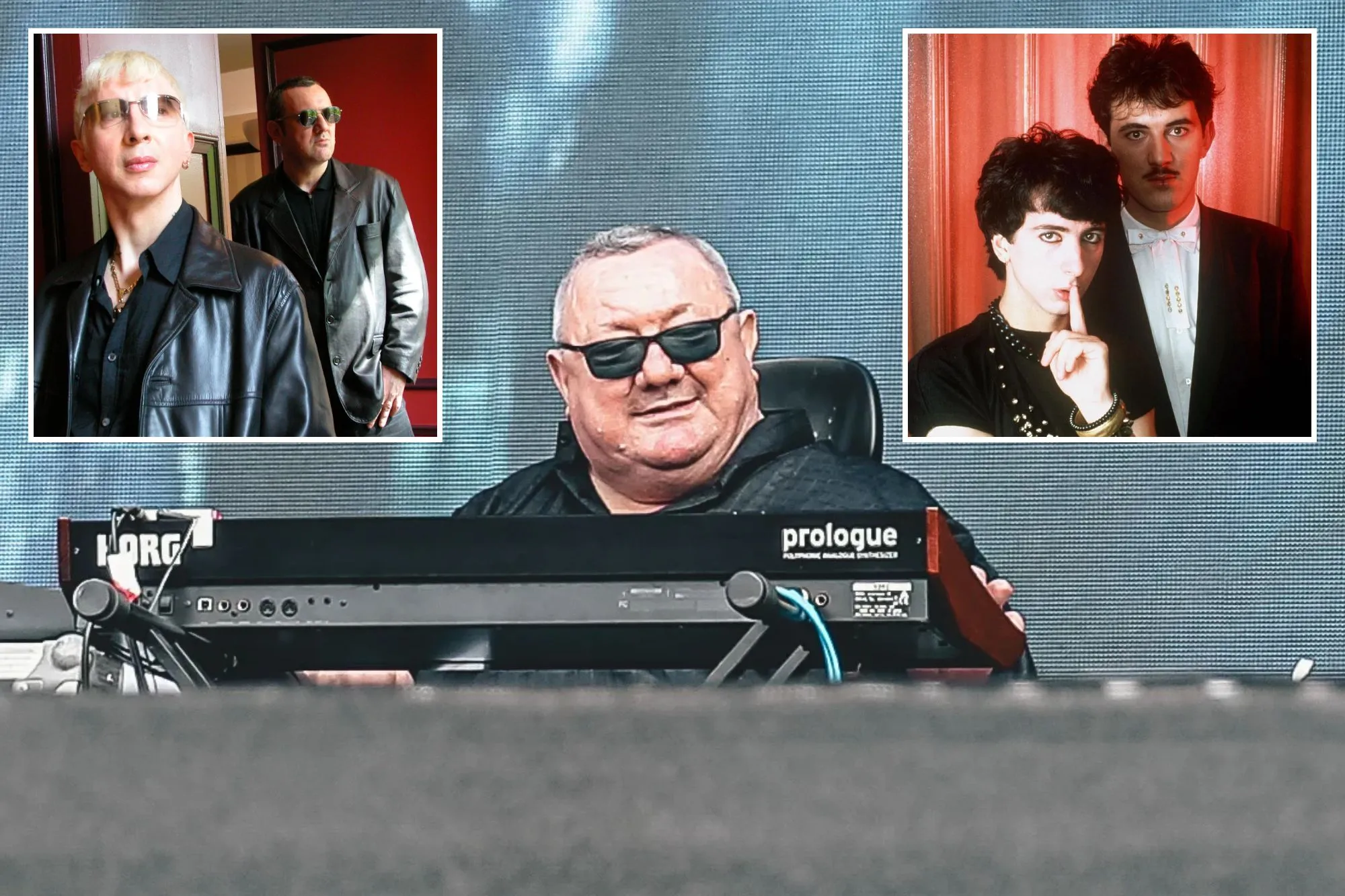
ICONIC musician Dave Ball has died aged 66.
The synth player and producer was one half of popular band Soft Cell.
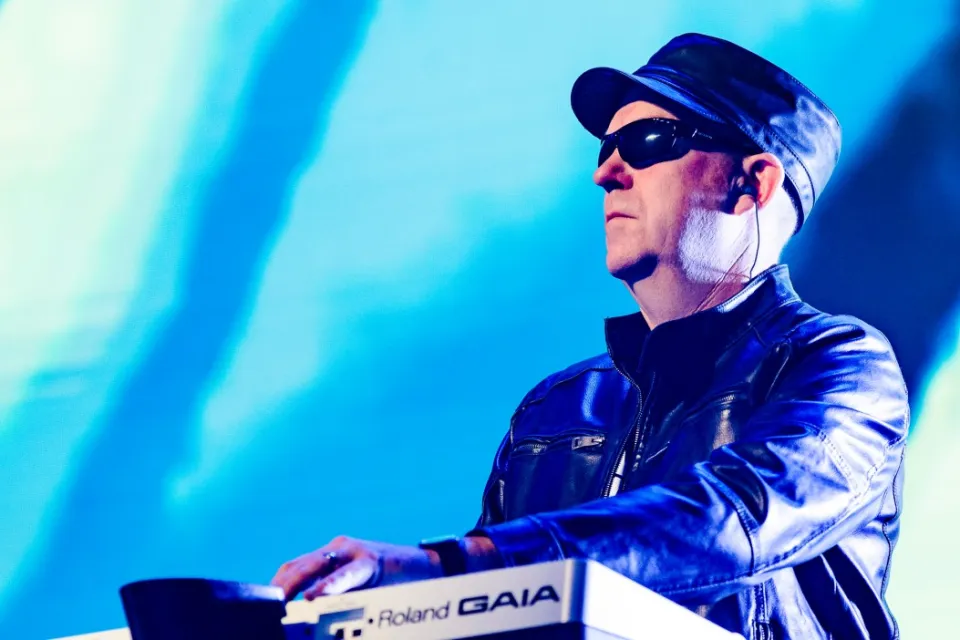
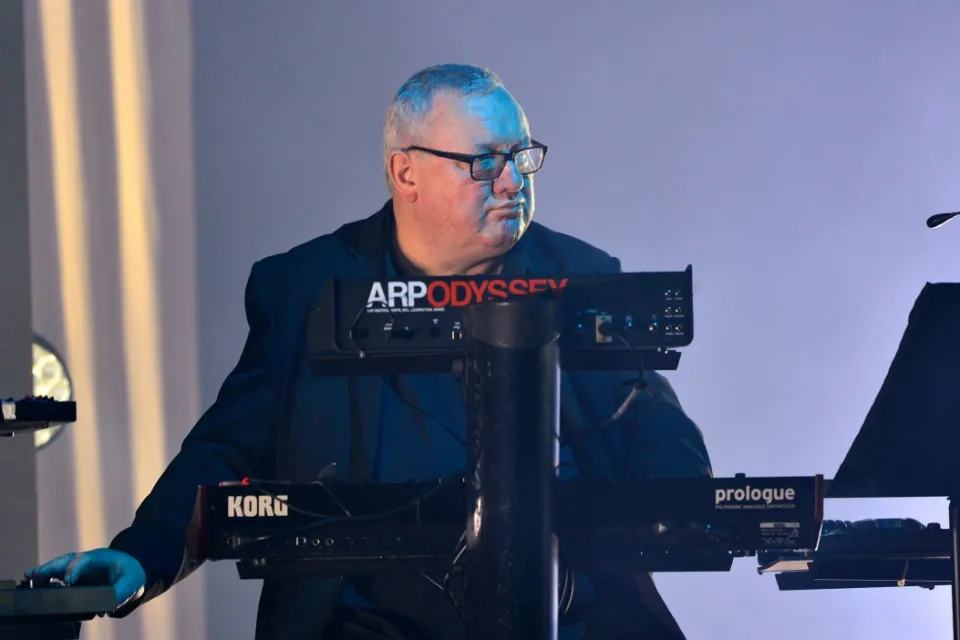
Representatives for the musician said he “passed away peacefully in his sleep at his London home on Wednesday”.
Dave’s cause of death has not yet been given.
His partner in Soft Cell, Marc Almond, paid tribute, writing: “He was a wonderfully brilliant musical genius.
“Thank you Dave for being an immense part of my life and for the music you gave me.
“I wouldn’t be where I am without you”.
Forming in the late 1970s, Ball and Almond were pioneers of the synth pop sound which would become popular in the 1980s.
The duo were best known for songs such as their cover of Gloria Jones’s Tainted Love, Say Hello, Wave Goodbye and Torch.
Water utilities perform better where voters can pick their leaders
How democratic is your water utility?
Does everyone who is registered to vote get to choose their leaders in elections? Or do only property owners get to vote for the managers? Maybe the public has no say at all in selecting the people who make decisions that determine safe and affordable drinking water?
“We see significant differences based on democracy,” said Kristin Dobbin, a researcher at UC Berkeley. “It really does influence the outcomes of a water system.”
In a new study she led, it turns out that water utilities where all voters have a say in choosing leaders tend to perform better.
I contacted Dobbin to learn more about what she and her colleagues discovered about what they call “water democracy” in California.
The researchers analyzed nearly all of the state’s residential water suppliers, more than 2,400 of them. They looked at three categories: those where all registered voters can elect board members; those where only property owners can; and those where people have no vote in choosing decision-makers. Fully 25% of the systems fall into this last category.
In 2012, California became the first state in the nation to declare access to clean, accessible and affordable drinking water a human right. The researchers wanted to see how these different types of utilities have fared in achieving that.
They already knew more than 700,000 Californians rely on water systems that are failing to meet drinking water standards, according to the State Water Resources Control Board, and an additional 1.8 million have systems considered “at risk” of failing.
The study, published this month in the journal Nature Water, found that 13% of water utilities with limited voting rights are identified as “failing,” similar to those where customers can’t vote on leaders. For fully democratic water systems, only 9% fall into that category.
Fully democratic water purveyors, which tend to be larger, also have significantly fewer cases of E. coli contamination from sewage leaks or agricultural runoff.
Those with the most cases of bacterial contamination are water utilities with no elected boards that are run by companies or mobile home parks. These serve many low-income communities and tend to serve more African Americans.
“We find very clearly that low-income communities of color are less likely to have water democracy than others,” Dobbin said.
The group of for-profit utilities led by unelected managers is also more likely to rely on a single source of water rather than diversifying, which Dobbin said puts them more at risk of an emergency if a well goes dry or tests reveal contamination.
Growing numbers of Californians are also struggling to afford the rising costs of their water bills. And on affordability, the group that performs the worst is utilities that allow only property owners, not all registered voters, to vote. The researchers found the utilities with the most democracy perform much better in delivering affordable water.
One caveat: Another recent study, led by UC Davis professor Samuel Sandoval Solis, examined who is leading nearly 700 public water agencies in California, and found that Latinos, as well as Black and Indigenous people, remain significantly underrepresented on their boards, as do women.
Here’s a look at other news about water, the environment and climate change this week:
Water news this week
I wrote about how tribes are urging Los Angeles to pump less groundwater in the Owens Valley. In addition to siphoning water from streams into its aqueduct, the Department of Water and Power says the city has 96 wells it can use to pump groundwater. Indigenous leaders told me the pumping has dried up springs and meadows. DWP says the water is used locally for purposes including controlling dust on the dry bed of Owens Lake, and that the city is taking steps to ensure protection of the environment.
Meanwhile, in a unanimous vote, the board of the Metropolitan Water District of Southern California, which delivers water for 19 million people, chose the agency’s new general manager: Shivaji Deshmukh, who leads the Inland Empire Utilities Agency. His appointment comes nearly nine months after the board fired general manager Adel Hagekhalil after an investigation into allegations of discrimination that exposed divisions within the agency.
Up north along the California-Oregon border, one year after the last of four dams was dismantled on the Klamath River, tribes and environmentalists say the river and its salmon are starting to rebound. Damon Goodman, regional director of the group California Trout, says shortly after the dams were removed, “the fish returned in greater numbers than I expected and maybe anyone expected,” Debra Utacia Krol reports in the Arizona Republic. Oregon Public Broadcasting also reports that Chinook salmon have returned to southern Oregon for the first time in more than a century.
In a new report, researchers say President Trump’s proposed budget would slash funding for federal programs aimed at bringing clean drinking water to Native communities by about $500 million, a nearly 70% decrease. The researchers, part of an initiative called Universal Access to Clean Water for Tribal Communities, said the proposal would reverse “hard-won progress toward clean, reliable water supplies for Native communities,” and they’re urging Congress to reject the cuts.
More climate and environment news
California hasn’t issued an emergency plea for the public to conserve energy, known as a Flex Alert, since 2022. As my L.A. Times colleague Hayley Smith reports, much of the credit for that goes to new battery energy storage, which has grown more than 3,000% since 2020.
The Trump administration plans to further cut staff at the Environmental Protection Agency and the Interior Department. Inside Climate News’ Katie Surma reports that the Interior Department plans to slash about 2,000 positions affecting national parks, endangered species and research. The plan surfaced in a court case after a judge temporarily blocked the administration from cutting staff during the government shutdown.
Earlier this year, my colleague Grace Toohey wrote about problems in Ventura County during the Thomas fire of 2017 and the Mountain fire of 2024, when firefighters saw hydrants run dry and found themselves short of water. Assemblymember Steve Bennett (D-Ventura) introduced legislation requiring Ventura County water suppliers to take various steps to try to prevent that, including having 24 hours of backup power to pump water for firefighting. Gov. Gavin Newsom signed the bill, which Bennett says is “implementing the lessons learned” from the fires.
One other thing
My former colleague Sammy Roth recently left the L.A. Times and has started his own newsletter about climate and culture called Climate-Colored Goggles. His first edition just came out, focusing on how Toyota has tarnished its green reputation so much that some of Hollywood’s leading environmentalists no longer want to be associated with it. Sammy writes that the Environmental Media Assn., Hollywood’s leading sustainability group, appears poised to cut ties with Toyota, its sponsor.
Sammy’s piece is, as usual, hard-hitting and insightful. I hope you’ll join me in continuing to follow and subscribe to his work.
Boiling Point, which Sammy helmed so brilliantly, will be back with a new installment next week from another member of our Climate and Environment team.
This is the latest edition of Boiling Point, a newsletter about climate change and the environment in the American West. Sign up here to get it in your inbox. And listen to our Boiling Point podcast here.
For more water and climate news, follow Ian James @ianjames.bsky.social on Bluesky and @ByIanJames on X.
Champions League: The wonderkids who have made their mark in the competition
This article could be made up entirely of Chelsea players given the success their youngsters had in a 5-1 demolition of Ajax.
The Blues gave minutes to 10 players aged 21 or younger, while they became the first team in Champions League history to have three teenage scorers.
Marc Guiu was first on the scoresheet, with the 19-year-old Spaniard – known as a powerful, quick number nine – poking home to briefly become the club’s youngest goalscorer in the competition.
His record on Wednesday night lasted for just 33 minutes with Estevao Willian, who is one year, three months and 20 days younger, netting a penalty.
Already a Brazil international with nine caps, Estevao was described as a “special talent” by ex-England striker Wayne Rooney when he scored a late winner against Liverpool earlier this month, while his Chelsea team-mate Jorrel Hato – another teenager who started against Ajax – said Barca sensation Yamal is the only player of comparison.
English winger Tyrique George scored Chelsea’s fifth goal, although the 19-year-old is already a familiar name after a breakthrough season with the Blues last term when he played 750 minutes in their run to the Europa Conference League title.
Reggie Walsh, a technical, deep-lying playmaker who turned 17 on Monday, broke another record for the club by becoming youngest player in Europe’s top tier competition, while Jamie Gittens, 21, became the youngest Chelsea player to create five or more chances in a Champions League match – a record previously held by Eden Hazard.
FIFA tournament featuring Afghan women’s refugee team relocated to Morocco | Football News
FIFA confirms change of name to Afghan Women United, dropping ‘refugee’ from the team name ahead of the tournament.
Published On 23 Oct 2025
A FIFA-organised tournament involving the Afghanistan women’s refugee team has been moved from the United Arab Emirates to Morocco, the world football governing body said, with the four-team friendly competition set to begin on Sunday.
The “FIFA Unites: Women’s Series” tournament, originally scheduled to run from October 23-29 in Dubai, also features the national women’s teams of the UAE, Chad and Libya.
Recommended Stories
list of 4 itemsend of list
The Afghanistan women’s refugee team’s creation stems from the Taliban’s ban on women’s sports following their takeover of Afghanistan in 2021, prompting players to flee the country, fearing persecution.
“FIFA would like to thank the Royal Moroccan Football Federation (FMRF) and looks forward to working together to host a successful tournament,” FIFA said in a statement.
The governing body also confirmed that the Afghanistan women’s refugee team has chosen a new official name, “Afghan Women United,” following consultation with FIFA.
Prior to the Taliban’s takeover, Afghanistan had 25 women players under contract, most of whom now live in Australia. Afghanistan’s men’s team continues as normal.
Russian drone kills two Ukrainian journalists on Donetsk eastern front line | Russia-Ukraine war News
A Russian drone has killed two Ukrainian journalists and wounded another in the eastern Ukrainian city of Kramatorsk, according to their outlet and the regional governor of the Donetsk region.
Freedom Media, a state-funded news organisation, said on Thursday that Olena Gramova, 43, and Yevgen Karmazin, 33, had been killed by a Russian Lancet drone while in their car at a petrol station in the industrial city. Another reporter, Alexander Kolychev, was hospitalised after the attack.
Recommended Stories
list of 3 itemsend of list
The Donetsk regional governor earlier announced details of the strike and posted images showing the charred remains of the journalists’ car, according to the AFP news agency.
Freedom Media said that Gramova, a native of Yenakiieve in the Donetsk region, had originally trained as a “finance specialist”, but turned to journalism in 2014, the year when Russia annexed Ukraine’s Crimean peninsula, and started arming a separatist movement in Donetsk and Luhansk in the Donbas.
Karmazin was born in Kramatorsk, also in Donetsk. The outlet said he “joined Ukraine’s international broadcasting channels as a cameraman in 2021”.
“From day one, they were there, covering evacuations, war crimes, soldier stories,” said the Kyiv Post in a post on X.
A Russian Lancet drone tore through Kramatorsk, killing Ukrainian journalist Olena Hubanova and cameraman Yevhen Karmazin as they documented the war from the front lines.
From day one, they were there — covering evacuations, war crimes, soldier stories.
Now they’re gone. pic.twitter.com/TNTN8H7nFd
— KyivPost (@KyivPost) October 23, 2025
Kramatorsk, which had a pre-war population of about 150,000 people, is one of the few remaining civilian hubs in the Donetsk region still under Ukrainian control.
Russian forces are approximately 16 kilometres (10 miles) from the city, where officials earlier this month announced the mandatory evacuation of children from some parts of the town and outlying villages.
Record numbers of journalists killed in conflict
The proliferation of cheap but deadly drones used both by Russian and Ukrainian forces has made reporting from the front-line regions of Ukraine increasingly dangerous.
Earlier in October, French photojournalist Antoni Lallican was killed by a drone near the eastern city of Druzhkivka, located in the Donetsk region.
Lallican had been killed by a “targeted strike” from a first-person-view drone, which allows operators to see their target before striking, according to Ukrainian forces cited by the European Federation of Journalists.
Precise tolls of journalists killed since the war started in 2022 vary. The Committee for the Protection of Journalists says that 17 journalists – Ukrainian and international – have been killed so far. The deaths of Gramova and Karmazin would bring that total to 19.
UNESCO said earlier this month that at least 23 media workers have been killed on both sides of the front line, including three Russian state media journalists in March. In mid-October, Russian war correspondent Ivan Zuyev was killed by a Ukrainian drone strike in the southern Zaporizhia region, according to state news agency RIA.
Recent years have seen record numbers of journalists killed in conflicts, the toll disproportionately accelerated by deaths in Gaza, where Israeli forces have deliberately targeted media workers like Al Jazeera’s Anas al-Sharif and Mohammad Salama, Reuters cameraman Hussam al-Masri, and Mariam Abu Daqqa, a freelance journalist working for AP.
Again, reports on deaths since the start of the two-year Gaza war differ. The United Nations said that 242 journalists had been killed by August this year. A tally by Shireen.ps, a monitoring website named after murdered Al Jazeera journalist Shireen Abu Akleh, said Israeli forces had killed more than 270 journalists and media workers over the same period.
Either way, more journalists have been killed in Gaza than in the United States Civil War, both World Wars, the Korean War, the Vietnam War, the wars in the former Yugoslavia and the post-9/11 war in Afghanistan combined, according to Brown University’s Costs of War project.
The one-of-a-kind tropical Christmas market in England with 35C temps
CHRISTMAS markets sound fun and cosy, walking around cobbled streets with a cup of mulled wine and gazing up at twinkling light – but no one enjoys doing that in the pouring rain.
But there’s one place in the UK that has an incredible light trail, plenty of food, ice skating and it’s all inside.
During the day, the Eden Project in Cornwall is home to beautiful famous tropical gardens showing off exotic plants and flowers.
But come 4pm from the end of November, it turns into a winter wonderland where kids can meet Father Christmas and families can skate across the indoor ice rink.
The Biomes look like huge baubles from the outside lit up on reds and greens, and this year, there’s a new Christmas Light Experience inside the Mediterranean Biome.
The Rainforest dome will be lit up with rainbow lights behind the palm trees and waterfall.
Father Christmas will be there too along with his elves, and families can meet them during a 45-minute experience.
It’s completely immersive, with ‘theatrical surprises’ and children get a gift too.
The ice rink is back as well and is also under cover so there’s no chance of bad weather ruining the experience, and there’s plenty of opportunity to munch on festive food too.
The cafes and restaurants will serve up winter warming snacks and drinks on Christmas Lights evenings – most will close at 7.15pm.
There will be everything from hearty family meals to mince pies and mulled wine.
Also available is the chance to book a luxury three-course Christmas lunch which will be served on the Med Terrace Restaurant.
Bookings for the festive lunch, include free entry to the Eden Project.
For most Christmas experiences you’ll have to wrap up, but make sure to be prepared for warmth if you visit.
During the Christmas events, the domes maintain their usual warm temperatures – especially in the humid Rainforest Biome which can reach up to 35C.
There are some areas that are outside still so it’s advisable to bring a coat too.
This year the Cornwall Christmas Market will return to the Eden Project for two days only, November 19-20, 2025.
There will be 70 stalls set up so you can get Christmas treats and stocking fillers.
Christmas at the Eden Project runs from Friday November 21, 2025 to Sunday January 4, 2026.
Entry to the domes for the Christmas lights between 4-8PM requires two tickets – the standard entry at £38 (for adults if bought in advance) and the specific Christmas experience which is £5.50pp.
Visiting Father Christmas also requires standard entry along with the experience ticket which is £32 – entry for one adult and one child.
The ice rink is open from now until February 2026, visitors can book a general skate session which is 40-minutes long and costs £13 for adults and £10 for children.
There are also family-fun session on selected mornings, parent & toddler ice play and even ice skating lessons.
Here are five cheap Christmas markets in Europe…

Bratislava, Slovakia
The Christmas Market in Bratislava is found between the Main Square and Hviezdoslavovo Square, with an ice skating rink as well.
Last year, it was even named the cheapest Christmas Market break by the Post Office.
Vilnius, Lithuania
Vilnius is another cheap Christmas Market destination and even the European Christmas Capital this year.
The biggest market is at Cathedral Square, where you will find the huge central Christmas Tree, with a smaller one at Town Hall Square.
Riga, Latvia
Riga is also often named one of Europe‘s cheapest Christmas Market destinations.
There are live DJs as well as a Santa House alongside the usual market stalls.
Gdansk, Poland
For Gdansk’s Christmas Markets, you need to head to Targ Węglow where there is a fairground and light installations.
It even won the Best Christmas Markets in Europe 2025 award.
Vienna, Austria
Vienna’s Rathausplatz Christmas Market is a popular one, as well as one of Europe’s largest.
It has 150 stalls, a small theme park and welcomed three million people last year.
Here’s another underrated European town with a pretty Christmas market and festive train that costs less to visit than a UK staycation.
Plus, the prettiest Christmas markets in Britain – with hotel stays from £37.
John Carpenter is long overdue for praise. He’s happy to play the hits
John Carpenter has this one recurring nightmare.
“I’m in a huge, massive town I don’t really know,” he says, “and I’m looking for the movie district. And inevitably all the theaters are closed down. They’re all closed down. That’s what the dream is.”
I’m visiting Carpenter at his longtime production house in Hollywood on one of L.A.’s unjustly sunny October afternoons. A vintage “Halloween” pinball machine and a life-size Nosferatu hover near his easy chair. I tell him I don’t think Freud would have too much trouble interpreting that particular dream.
“No, I know,” he says, laughing. “I don’t have too much trouble with that either.”
Nonetheless, it truly haunts him — “and it has haunted me over the years for many dreams in a row,” he continues. “I’m either with family or a group, and I go off to do something and I get completely lost. [Freud] wouldn’t have too much trouble figuring that out either. I mean, none of this is very mysterious.”
Carpenter is a gruff but approachable 77 these days, his career as a film director receding in the rearview. The last feature he made was 2010’s “The Ward.” His unofficial retirement was partly chosen, partly imposed by a capricious industry. The great movie poster artist Drew Struzan died two days before I visited — Carpenter says he never met Struzan but loved his work, especially his striking painting for the director’s icy 1982 creature movie “The Thing” — and I note how that whole enterprise of selling a movie with a piece of handmade art is a lost one.
“The whole movie business that I knew, that I grew up with, is gone,” he replies. “All gone.”

John Carpenter with John Mulaney, appearing as a part of “Everybody’s in L.A.” at the Sunset Gower Studios in May 2024.
(Adam Rose / Netflix)
It hasn’t, thankfully, made him want to escape from L.A. He still lives here with his wife, Sandy King, who runs the graphic novel imprint Storm King Comics, which Carpenter contributes to. He gamely appeared on John Mulaney’s “Everybody’s in L.A.” series on Netflix and, earlier this year, the Los Angeles Film Critics Assn. gave him a Career Achievement Award — a belated lovefest for a veteran who was sidelined after “The Thing” flopped, cast out into indie darkness and was never personally nominated for an Oscar.
The thing that does keep Carpenter busy these days (other than watching Warriors basketball and playing videogames) is the thing that might have an even bigger cultural footprint than his movies: his music. With his adult son Cody and godson, Daniel Davies, Carpenter is once again performing live concerts of his film scores and instrumental albums in a run at downtown’s Belasco this weekend and next.
The synthy, hypnotic scores that became his signature in films like “Halloween” and “Escape from New York” not only outnumber his output as a director — he’s scored movies for several other filmmakers and recently made a handshake deal in public to score Bong Joon Ho’s next feature — but their influence and popularity are much more evident in 2025 than the style of his image-making.
From “Stranger Things” to “F1,” Carpenter’s minimalist palette of retro electronica combined with the groove-based, trancelike ethos of his music (which now includes four “Lost Themes” records) is the coin of the realm so many modern artists are chasing.
Very few composers today are trying to sound like John Williams; many of them want to sound like John Carpenter. The Kentucky-raised skeptic with the long white hair doesn’t believe me when I express this.
“Well, see, I must be stupid,” he says, “because I don’t get it.”
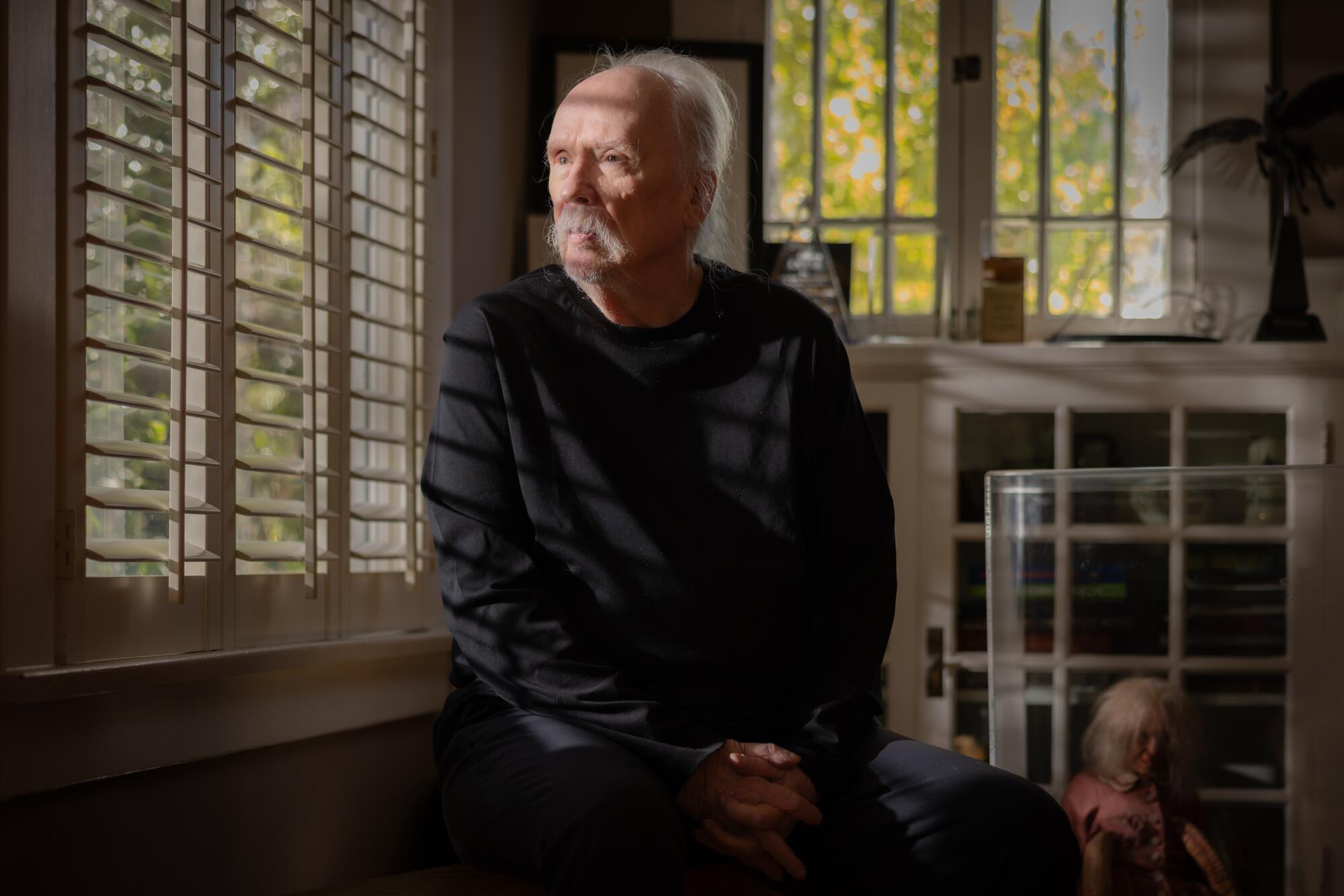
“The true evil in the world comes from people,” says Carpenter. “I know that nature’s pretty rough, but not like men.
(Jason Armond / Los Angeles Times)
Carpenter is quick to put himself down. He always says that he scored his own films because he was the only composer he could afford, and that he only used synths because they were cheap and he couldn’t properly write music for an orchestra. When I tell him that Daniel Wyman, the instrumentalist who helped program and execute the “Halloween” score in 1978, praised Carpenter’s innate knowledge of the “circle of fifths” and secondary dominants — bedrocks of Western musical theory that allowed Carpenter’s scores to keep the tension cooking — he huffs.
“I have no idea what he’s talking about,” Carpenter says, halfway between self-deprecation and something more rascally. “It all comes, probably, from the years I spent in our front room with my father and listening to classical music. I’m sure I’m just digging this s— out.”
Whether by osmosis or genetics or possibly black magic, Carpenter clearly absorbed his powers from his father, Dr. Howard Carpenter, a classically trained violinist and composer. Classical music filled the childhood home in Bowling Green and for young John it was all about “Bach, Bach and Bach. He’s my favorite. I just can’t get enough of Johann there.”
It makes sense. Bach’s music has a circular spell quality and the pipe organ, resounding with reverb in gargantuan cathedrals, was the original synthesizer.
“He’s the Rock of Ages of music,” says Carpenter, who particularly loves the fugue nicknamed “St. Anne” and the Toccata and Fugue in D Minor. “Everybody would go back to Mozart or Beethoven. They are astonishing — Beethoven is especially astonishing — but they’re not my style. I don’t feel it like I do with Bach. I immediately got him.”
Carpenter was also a film score freak since Day 1. He cites the early electronic music in 1956’s “Forbidden Planet” and claims Bernard Herrmann and Dimitri Tiomkin as his two all-time favorites. Just listen, he says, to the way Tiomkin’s music transitions from the westerny fanfare under the Winchester Pictures logo to the swirling, menacing orchestral storm that accompanies “The Thing From Another World” title card in that 1951 sci-fi picture that Carpenter remixed as “The Thing.”
“The music is so weird, I cannot follow it,” he says. “But I love it.”
Yet Carpenter feels more personally indebted to rock ‘n’ roll: the Beatles, the Stones, the Doors. He wanted to be a rock star ever since he grew his hair long and bought a guitar in high school. He sang and performed R&B and psychedelic rock for sororities on the Western Kentucky campus as well as on a tour of the U.S. Army bases in Germany. He formed the rock trio Coupe de Villes with his buddies at USC and they made an album and played wrap parties.
He also kept soaking up contemporary influences, listening to Warren Zevon’s “Werewolves of London” while location scouting for “Halloween.” Peter Fonda later introduced Carpenter to Zevon and he wanted the director to adapt the song into a film that never happened (starring Fonda as the werewolf, but “this time he gets the girl,” Carpenter recalls). In the ’80s he blasted Metallica with his two boys and he still loves Devo.
It’s incredibly rare for a film director to score their own films, rarer still for one to spend decades on stage as a performing musician. The requisite personalities would seem diametrical.
“My dad was a performing musician, so it was just part of the family,” Carpenter says. However, until 2016, when Carpenter first toured with his music, he was consumed with stage fright. “I had an incident when I was in a play in high school,” he says. “I went up and I forgot my lines. Shame descended upon me and I had a tough time. I was scared all the time.”
The director credits his touring drummer, Scott Seiver, for helping him beat it.
“Your adrenaline carries you to another planet when that thing starts,” he sighs with pleasure. “You hear a wall of screaming people. It’s a big time.”
He pushes back against the idea that directors “hide behind the camera.”
“The pressure, that’s the biggest thing,” Carpenter says. “You put yourself under pressure from the studio, you’re carrying all this money, crew, you want to be on time.”
He remembers seeing some haggard making-of footage of himself in post-production on “Ghost of Mars” in 2001 and thinking: Oh my God, this guy is in trouble. “I had to stop,” he says. “I can’t do this to myself anymore. I can’t take this kind of stress — it’ll kill you, as it has so many other directors. The music came along and it’s from God. It’s a blessing.”
John Carpenter is grateful but he doesn’t believe in God. He believes that, when we die, “we just disperse — our energy disperses, and we return to what we were. We’re all stardust up there and the darkness created us, in a sense. So that’s what we have to make peace with. I point up to the infinite, the space between stars. But things stop when you die. Your heart stops, brain — everything stops. You get cold. Your energy dissipates and it just… ends. The End.”
This is not exactly a peaceful thought for him.
“I mean, I don’t want to die,” he adds. “I’m not looking forward to that. But what can you do? I can’t control it. But that’s what I believe and I’m alone in it. I can’t put that on anybody else. Everybody has their own beliefs, their own gods, their own afterlife.”
He describes himself as a “long-term optimist but a short-term pessimist.”
“I have hope,” he says, “put it that way.” Yet he looks around and sees a lot of evil.
“The true evil in the world comes from people,” says Carpenter, who has long used cinematic allegories to skewer capitalist pigs and bloodthirsty governments. “I know that nature’s pretty rough, but not like men. You see pictures of lions taking down their prey and you see the face of the prey and you say: ‘Oh, man.’ Humans do things like that and enjoy it. Or they do things like that for power or pleasure. Humans are evil but they’re capable of massive good — and they’re capable of the greatest art form we have: music.”
The greatest?
“You don’t have to talk about it. You just sit and listen to it. It’s not my favorite,” he clarifies, alluding to his first love, cinema — “but it’s the one that transcends centuries.”
Music has always been kinder to him than the movie business. That business recently reared its ugly head when A24 tossed his completed score for “Death of a Unicorn.” (At least he owns the rights and will be putting it out sometime soon.) In addition to the high he gets from playing live, he is currently working on a heavy metal concept album complete with dialogue. It’s called “Cathedral” and he’ll be playing some of it at the Belasco.
It’s essentially a movie in music form, based on a dream Carpenter had. Though not one he finds scary. What scares Carpenter, it seems, is not being in control.
That happened to him in the movie world, it’s happening more and more as what he calls the “frailties of age” mount and it happens in that nightmare about getting lost in a big city and not finding any theaters.
“But I can’t do anything about it,” he says. “What can I do? See, the only thing I can do is what I can control: music. And watching basketball.”
I’m a travel expert and use one trick in every hotel to get the best sleep
Alexandra Dubakova, a travel expert with FreeTour who has visited more than 30 countries, is always on the move. She has come up with a neat trick to ensure she gets a good night’s sleep
A travel expert has mastered the art of getting a good night’s sleep in a hotel using a simple trick.
Alexandra Dubakova, a travel expert with FreeTour who has visited more than 30 countries, is always on the move.
While jet-setting has a reputation for glitz and glamour, as anyone who has been sent away to a far-flung town in a small central European nation will know, it comes with its challenges. One of them, particularly for those who enjoy their home comforts, is sleeping in a hotel.
Different bedding, the strange whir of a lift mechanism, and a room that is either too hot or too cold can all knock the sensitive sleeper off kilter. Luckily, Alexandra has a trick that can help you sleep through the night.
“Changing time zones, dealing with jet lag and the annoying strip of light between hotel curtains is a nightmare. I always grab the hangers from the hotel room closet and use them to pinch the curtains shut. It creates a blackout room and I get proper rest irrespective of the time zone,” she told the Mirror.
READ MORE: Beautiful city 20 minutes from London with 1,000-year-old market and oldest pubs — not OxfordREAD MORE: The seaside town where residents left overnight and never came back
Sherry Martin Peters, a veteran flight attendant, has similar advice. She told the Mirror: “Some flight attendants travel with rolls of black electrical tape, not to fix anything, but to smother light sources that feel microscopic until you’re sleep-deprived.
“The green dot of a TV on standby. The piercing blue glow of a USB charger. One by one, the light sources disappear until the room looks lifeless. Towels get stuffed under the crack of the door to block out hallway light, because even a sliver of brightness can convince a jet-lagged brain it’s still daytime somewhere, which it usually is.”
The curse of a bad night’s sleep is something that many hotel guests suffer from. In a 2020 paper published in Tourism and Hospitality Research, it was found that only one in three travelers reported being satisfied with their sleep while on the road.
Dr. Rebecca Robbins, assistant professor of medicine at Harvard Medical School and an associate scientist at Boston’s Brigham and Women’s Hospital, has been hired by Hilton as a sleep expert. Recently, she shared her tips for getting a good night’s kip with National Geographic.
Dr Robbins argues that “finding the familiar in the unfamiliar” is key. “The truth is that when we are in an unfamiliar environment, we fundamentally have a harder time unwinding,” she said,
When we’re at home, our bodies are able to relax more easily. When staying somewhere new, our brains are put on higher alert by the different sounds, smells and other sensory factors. One way to trick your brain into calming down is to spray smells with a positive or homely association. There is proof in the process. In 2024, University of Pittsburgh School of Medicine researchers and University of Pittsburgh Medical Center published a study that showed familiar scents helped to break negative thought-cycles and overcome depression.
Another cause of bad sleep is a restless mind. While whirring cogs is an ailment that can strike anywhere, the stresses of travel mean you’re more likely to have things on your mind when away. Dr. Robbins suggests writing all of these worries down on a piece of paper as a way of relieving your mind of too many things to think about.
Recreating your routine at home is another top tip for entering the land of nod. “Being religious about these things is actually really important because your brain starts to understand that what comes next is sleep,” the sleep doctor said.
Travelling with kids is ‘so much easier’ with 10 parent-approved hacks
Parents loved the ‘genius’ tips when they were shared online in a popular video
Family holidays offer lots of excitement, but they can also involve high levels of stress. From making sure your children have packed all their essentials to dealing with travel disruptions, it’s a busy time for parents.
Thankfully, one parent who has picked up a few helpful tips has shared a video outlining some of her favourite hacks – and social media users loved the ‘genius’ ideas. Content creator @muddlethroughmummy often shares tips and tricks with her 627k followers on TikTok, where she is known for her ‘positive parenting’ videos.
In one post, the savvy mum shared a video captioned: “Here’s 10 tips on how you can make travelling with kids that bit easier.” In her video, the parent explained: “Take your own car seat. Most airlines let you check it into oversized luggage free of charge.
“Before you travel, save the whole family’s boarding passes to your phone wallet for ease. The less you have to carry, the better. Unfortunately, most airports have now monetised the fast track for families. But if you’re travelling in peak times, it might be worth paying the £6 per head to skip the long queues.”
She continued: “Take your push chair all the way to the foot of the airplane stairs. Gates can be a bit of a walk from the lounge, and it’s great for naps whilst you wait. Designate one person to unload all technology and liquids at security, and the other one can keep an eye on the kids.
“Having your kids carry their own luggage is a great idea. Mine really enjoy having that responsibility. They like to be involved, and it makes them feel important. And travelling with hand luggage only whenever possible is a great tip, so you’re not having to wait around at the other end.
“Don’t forget your reusable water bottles to fill up once through security. And take your own snacks. If we have early flights, I do breakfast pouches with individually packed pastries and fruit. And if you’re worried your kids won’t like the airplane food, take porridge or pasta pots with you and then just ask for hot water.
“Lollipops are great for takeoff to avoid ears getting popped, or milk works if they’re still having it. I hope you found this useful!”
Viewers loved the video, and it racked up over 16,000 views. Replying to the post, one parent said: “Oh genius idea about the pasta pots, I have a very fussy 6yo and was worrying about what she would eat. Thank you!”
Someone else shared: “All tech in one bag was a game changer for us. With phones and iPad and 3 switches it was a nightmare with it all in different bags!”
Column: Trump is in his Louis XIV era, and it’s not a good look
To say that President Trump is unfazed by Saturday’s nationwide “No Kings” rally, which vies for bragging rights as perhaps the largest single-day protest in U.S. history, is the sort of understatement too typical when describing his monarchical outrages.
Leave aside Trump’s grotesque mockery of the protests — his post that night of an AI-generated video depicting himself as a becrowned pilot in a fighter jet, dropping poop bombs on citizens protesting peacefully below. Consider instead two other post-rally actions: On Sunday and Wednesday, “Secretary of War” Pete Hegseth announced first that on Trump’s orders the military had struck a seventh boat off Venezuela and then an eighth vessel in the Pacific, bringing the number of people killed over two months to 34. The administration has provided no evidence to Congress or the American public for Trump’s claims that the unidentified dead were “narco-terrorists,” nor any credible legal rationale for the strikes. Then, on Monday, Trump began demolishing the White House’s East Wing to create the gilded ballroom of his dreams, which, at 90,000 square feet, would be nearly twice the size of the White House residence itself.
As sickening as the sight was — heavy equipment ripping away at the historic property as high-powered hoses doused the dusty debris — Trump’s $250-million vanity project is small stuff compared to a policy of killing noncombatant civilian citizens of nations with which we are not at war (Venezuela, Colombia and Ecuador). Yet together the actions reflect the spectrum of consequences of Trump’s utter sense of impunity as president, from the relatively symbolic to the murderous.
“In America the law is king,” Thomas Paine wrote in 1776. Not in Trump’s America.
Among the commentariat, the president’s desecration of the East Wing is getting at least as much criticism as his extralegal killings at sea. Many critics see in the bulldozing of the People’s House a metaphor for Trump’s destructive governance generally — his other teardowns of federal agencies, life-saving foreign aid, healthcare benefits and more. The metaphor is indeed apt.
But what’s more striking is the sheer sense of impunity that Trump telegraphs, constantly, with the “je suis l’état” flare of a Louis XIV — complete (soon) with Trump’s Versailles. (Separately, Trump’s mimicry of French emperors now includes plans for a sort of Arc de Triomphe near Arlington Cemetery. A reporter asked who it would be for. “Me,” Trump said. Arc de Trump.)
No law, domestic or international, constrains him, as far as the convicted felon is concerned. Neither does Congress, where Republicans bend the knee. Nor the Supreme Court, with its 6-3 right-wing majority, including three justices Trump chose in his first term.
The court’s ruling last year in Trump vs. United States gives Trump virtual immunity from criminal prosecution, but U.S. servicemembers don’t have that protection when it comes to the deadly Caribbean Sea attacks or any other orders from the commander in chief that might one day be judged to have been illegal.
The operation’s commander, Navy Adm. Alvin Holsey, reportedly expressed concerns about the strikes within the administration. Last week he announced his retirement after less than a year as head of the U.S. Southern Command. It could be a coincidence. But I’m hardly alone in counting Holsey as the latest casualty in Trump and Hegseth’s purge of perceived nonloyalists at the Pentagon.
“When the president decides someone has to die, the military becomes his personal hit squad,” military analyst and former Republican Tom Nichols said Monday on MSNBC. Just like with kings and other autocrats: Off with their heads.
Sen. Rand Paul of Kentucky, a rare maverick Republican, noted on Sunday on NBC’s “Meet the Press” that in years past, the Coast Guard would board foreign boats suspected of ferrying drugs and, if contraband were found, take it and suspected traffickers into custody, often gleaning information about higher-ups to make a real dent in the drug trade. But, Paul added, about one in four boats typically had no drugs. No matter nowadays — everyone’s a target for deadly force. “So,” Paul said, “all of these people have been blown up without us knowing their name, without any evidence of a crime.” (Paul was the only Republican senator not invited to lunch with Trump on Monday in the paved-over Rose Garden.)
On Monday, Ecuador said no evidence connects a citizen who survived a recent U.S. strike to any crime. Colombian President Gustavo Petro accused the United States of murdering a fisherman in a September strike, provoking Trump to call Petro a “drug leader” and unilaterally yank U.S. foreign aid. A Venezuelan told the Washington Post that the 11 people killed in the first known U.S. strike were fishermen; national security officials told Congress the individuals were headed back to shore when hit. Meanwhile, the three countries and U.S. news reports contradict Trump’s claims that he’s destroying and seizing fentanyl — a drug that typically comes from Mexico and then is smuggled by land, usually by U.S. citizens.
Again, no matter to America’s king, who said last week that he’s eyeing land incursions in Venezuela now “because we’ve got the sea very well under control.” Trump’s courtiers say he doesn’t need Congress’ authorization for any use of force. The Constitution suggests otherwise.
Alas, neither it nor the law limits Trump’s White House makeover. He doesn’t have to submit to Congress because he’s tapping rich individuals and corporations for the cost. Past presidents, mindful that the house is a public treasure, not their palace, voluntarily sought input from various federal and nonprofit groups. After reports about the demolition, which put the lie to Trump’s promise in July that the ballroom “won’t interfere with the current building,” the American Institute of Architects urged its members to ask Congress to “investigate destruction of the White House.”
Disparate as they are, Trump’s ballroom project and his Caribbean killings were joined last week. At a White House dinner for ballroom donors, Trump joked about the sea strikes: “Nobody wants to go fishing anymore.” The pay-to-play titans laughed. Shame on them.
Trump acts with impunity because he can; he’s a lame duck. But other Republicans must face the voters. Keep the “No Kings” protests coming — right through the elections this November and next.
Bluesky: @jackiecalmes
Threads: @jkcalmes
X: @jackiekcalmes
The Sports Report: How Blake Snell turned his season around
From Jack Harris: For much of the year, the Dodgers’ starting rotation felt broken.
In large part, because the pitcher acquired to be its anchor was struggling to find himself.
It’s easy to forget now, with Blake Snell in the midst of a historic October performance that has helped lead the Dodgers back to the World Series. But for most of his debut season in Los Angeles, the two-time Cy Young Award winner and $182-million offseason signing was grappling with frustration, enduring what he described recently as “the hardest year of my career.”
First, there was well-documented early adversity: A shoulder problem that Snell quietly pitched through in two underwhelming starts at the beginning of the campaign, before sidelining him on the injured list for the next four months.
Then, there was an ordeal Snell detailed last week for the first time: In late August, on the same day his wife, Haeley, gave birth to the couple’s second child, Snell got so sick in the hospital that he fainted, was taken to the emergency room, and kept overnight hooked up to IV fluids.
“It’s been a lot,” Snell told The Times last week, while reflecting on a difficult season now primed for a triumphant final act. “But that’s what this is all about. Find the best in yourself. Fight through all the doubt, the bull—. And figure it out.”
WORLD SERIES SCHEDULE, RESULTS
All times Pacific
Dodgers vs. Toronto
Friday at Toronto, 5 p.m., Fox, AM 570, KTNQ 1020, ESPN Radio
Saturday at Toronto, 5 p.m., Fox, AM 570, KTNQ 1020, ESPN Radio
Monday at Dodgers, 5 p.m., Fox, AM 570, KTNQ 1020, ESPN Radio
Tuesday at Dodgers, 5 p.m., Fox, AM 570, KTNQ 1020, ESPN Radio
*Wed., Oct. 29 at Dodgers, 5 p.m., Fox, AM 570, KTNQ 1020, ESPN Radio
*Friday, Oct. 31 at Toronto, 5 p.m., Fox, AM 570, KTNQ 1020, ESPN Radio
*Saturday, Nov. 1 at Toronto, 5 p.m., Fox, AM 570, KTNQ 1020, ESPN Radio
*-if necessary
CLIPPERS
Walker Kessler had 22 points and nine rebounds, Lauri Markkanen scored 20 and the Utah Jazz beat the Clippers 129-108 on Wednesday night in the season opener for both teams.
Brice Sensabaugh added 20 points off the bench for Utah, which set a team record for points in a season opener.
The new-look Clippers appeared confused on the court at times in a disappointing debut for a team with lofty aspirations. Ivica Zubac led them with 19 points and seven rebounds. James Harden and Brook Lopez each scored 15. Kawhi Leonard had 10 points on 3-of-9 shooting.
It was their most lopsided season-opening loss in 17 years.
LAKERS
From Bill Plaschke: The extraordinary athlete stepped on to the Crypto.com Arena court baseline during the first quarter of the Lakers season opener Tuesday night amid great buzz.
When his smiling face was later shown on the video board, he was enveloped in the night’s loudest individual cheers.
No, Blake Snell.
One game under the unofficial Dodger regime, and the Lakers are already showing their new owners what they are missing.
They need more Dodgers.
With injured and bespectacled James watching stoically from the end of the Laker bench while new owner Mark Walter was witnessing the same mess in a baseline seat nearby, the Lakers stumbled their way to a 119-109 loss to the Golden State Warriors.
Lakers takeaways: Third-quarter struggles remain, when will LeBron James return?
Premiere of ‘Inside the NBA,’ er, ‘NBA Tip-Off’ starts with good-natured digs at ESPN
Michael Jordan says one free throw made him ‘the most nervous I’ve been in years.’ Here’s why
THIS DAY IN SPORTS HISTORY
1921 — Green Bay Packers play 1st APFA (forerunner to NFL) game; beat Minneapolis Marines, 7-6 at Hagemeister Park, Green Bay, Wis.
1949 — Don Doll of the Detroit Lions intercepts four passes in a 24-7 victory over the Chicago Cardinals.
1960 — Jim Martin of Detroit becomes the first kicker to kick two field goals over 50 yards in a game as the Lions beat the Baltimore Colts 30-17.
1964 — Joe Frazier dominates German Hans Huber for an easy points win to capture the boxing heavyweight gold medal in Tokyo.
1971 — Greg Pruitt rushes for 294 yards on 19 carries to lead the Oklahoma Sooners to an NCAA record 711 yards rushing and a 75-28 pounding of Kansas State.
1976 — Pittsburgh’s Tony Dorsett rushes for 180 yards in a 45-0 rout over Navy to become the top career rusher in NCAA history with 5,206 yards.
1988 — Dan Marino passes for 521 yards, three touchdowns and five interceptions as the Miami Dolphins lose to the New York Jets 44-30. Marino completes 35 of 60 passes as he produces the second-best single-game total yardage in NFL history.
1993 — The Toronto Maple Leafs break the NHL record for most victories at the start of the season, winning their ninth straight game by beating the second-year Tampa Bay Lightning 2-0.
1999 — Florida State’s Bobby Bowden gets his 300th win with a 17-14 win over his son, Clemson coach Tommy Bowden. With the victory Bowden joins Bear Bryant, Pop Warner, Joe Paterno and Amos Alonzo Stagg as the only major college coaches to reach 300 victories.
2000 — The New York Jets, trailing 30-7 at the end of the third quarter, come back to beat the Miami Dolphins 40-37 in overtime on Monday night. The Jets score four touchdowns and a field goal in the fourth quarter to force overtime.
2005 — San Diego’s LaDainian Tomlinson is held to a career-low 7 yards rushing in 17 carries and fails to score in the Chargers’ 20-17 loss at Philadelphia, ending his NFL record-tying streak of games with a touchdown at 18.
2008 — Carolina’s Brandon Sutter gives one of hockey’s most famous families another milestone, scoring his first NHL goal in a 4-1 loss at Pittsburgh. The 19-year-old Sutter, son of New Jersey Devils coach Brent Sutter, is the ninth member of the Sutter family to play in the NHL.
2011 — Tim Tebow rallies the Broncos for two touchdowns in the final 2:44 of the fourth quarter to force overtime, and Matt Prater’s 52-yard field goal gives Denver an improbable 18-15 victory over the stunned Miami Dolphins. The Broncos appeared beaten when they trailed 15-0 with 5:23 left and took over at their 20.
2016 — Jay Ajayi ties an NFL record by surpassing 200 yards rushing for the second game in a row, helping the Miami Dolphins rally past the Buffalo Bills 28-25. Ajayi rushes for 214 yards in 29 carries after totaling 204 yards a week earlier in a win over Pittsburgh.
2019 — All-Star point guard Kyrie Irving pours in 50 points, setting a new NBA record for points on debut with a new team as his Brooklyn Nets go down 127-126 at home to the Minnesota Timberwolves.
Compiled by the Associated Press
THIS DAY IN BASEBALL HISTORY
1945 — Jackie Robinson signs a contract with the Montreal Royals, minor league farm team of the Brooklyn Dodgers.
Compiled by the Associated Press
Until next time…
That concludes today’s newsletter. If you have any feedback, ideas for improvement or things you’d like to see, email me at [email protected]. To get this newsletter in your inbox, click here.
Telsa Q3 profit down more than a third despite record $28.1B revenue

Tesla posted sharply lower profit for the July to September quarter despite a signifcant jump in revenue. The firm’s performance was hit by tough competition in the EV market, U.S. duties on imports of parts and materials to make its cars, higher capital expenditure costs and a sales slump in Europe. File photo by Divyakant Solanki/EPA
Oct. 23 (UPI) — Tesla reported profits were down 37% in the third quarter despite a jump in revenue to $28.1 billion on frontloading of sales driven by buyers racing to beat the deadline for a federal tax credit before it expired Sept. 30.
The tax credit, worth up to $7,500 on EV purchases, helped the firm buck a run of declining quarterly sales along with a new six-seat version of its popular Model Y midsize SUV that performed well in the Chinese market.
While sales of competitors, including Ford and Hyundai, still outpaced Tesla’s it also lured in buyers with interest-free finance and insurance contributions.
That helped overall income rise by just under $3 billion, compared with the same period last year, and $1.73 billion more than predicted by analysts, with the largest contribution still coming from vehicle sales.
Revenue from Tesla’s energy generation and storage division surged 44% to $3.42 billion.
However, net profit slumped from $2.17 billion in the third quarter of 2024, to just $1.37 billion this year, with the results sending the stock price lower.
Tesla’s shares were down more than 3% at $424.60 in out-of-hours trade on the NASDAQ before Thursday’s market open — but remained well above the 30-day low of $413.49 they hit Oct. 10. The stock is up 9% year-to-date.
The firm’s performance was dragged down by an ongoing slump in its European market, partly due to a public backlash against Musk and tough competition from rivals from the continent and beyond, such as Volkswagen and China’s BYD.
Tariffs on car parts and raw materials imposed by President Donald Trump and higher research and development costs were also factors as the company embarks on CEO Elon Musk‘s efforts for an increased focus on AI and robotics.
Chief Accounting Officer Vaibhav Taneja told investors on a conference call Wednesday that the hit to Tesla from import duties in the July to September period was in excess of $400 million.
Tesla said it aimed to meet its target to begin “volume production” of Cybercab, heavy-duty electric semi trucks and its new Megapack 3 battery energy storage system in 2026, with Musk saying he expected Cybercab to begin rolling off the production line in the second quarter.
“First generation production lines” for Tesla’s humanoid Optimus robot were currently under construction. Musk said the firm expected to unveil Optimus V3 in the first quarter.
Tesla posted its latest results as shareholders were preparing for a November vote to approve a new remuneration package for Musk of as much as $1 trillion, all in shares.
The deal would be conditioned on his delivering an ambitious turnaround program involving boosting market capitalization from around $1.38 trillion to an unprecedented $8.5 trillion by pivoting Tesla to concentrate on autonomous driving, AI and robotics.
Apple, Microsoft and NVIDIA, the current behemoths of the U.S. tech sector, have market caps in the $2.6 to $3.2 trillion range.
Luke Littler aims to claim world number one spot at European Championship
Littler closed the gap on Humphries when he won the World Grand Prix earlier this month, saying afterwards: “Obviously, until I get that world number one spot, I will never call myself the best in the world.
“I don’t want to think about it too much, but I could be world number one before that World Championship.
“I’ve just got to keep chucking away and put as much pressure as I can on Luke.”
Littler begins his European Championship campaign against five-time world champion Raymond van Barneveld, 58, on Friday.
Humphries, 30, faces Pole Krzysztof Ratajski in the first round and could potentially meet Littler in the quarter-finals.
A day after his Grand Prix victory, Littler was beaten in the World Youth Championship semi-finals by Beau Greaves, before he then won the Players Championship 32 event.
He has also announced a new management deal with Target Darts after splitting with Martin Foulds of ZXF Sports Management, who had managed him for five years.
Littler will hope to improve his recent record in Germany, where he has skipped some tournaments after facing a hostile reception from spectators. He was booed alongside Humphries when the pair lost to Germany at the World Cup of Darts in Frankfurt in June.
After the European Championship, there are two big tournaments before the World Championship starts on 11 December – the Grand Slam of Darts (8-16 November) and Players Championship Finals (21-23 November).
Incredible time-warp pub that’s so hidden it’s not even on the internet

THERE are plenty of quirky pubs around the UK, and some of the best are the ones that take you by surprise.
I recently stumbled on one of the most extraordinary pubs I’ve ever been in – only to discover it’s unlikely to be around for very much longer.
We had gone for a walk on a fine autumn day on the North Kent Downs, that ridge of hills which runs along the southern edge of the M25 and are crisscrossed by ancient pathways.
There’s the Green Sand Ridge Path and The Pilgrims Way which was used by those walking to Canterbury Cathedral from London and beyond since the time of Chaucer and his tales.
Our starting point was Kemsing, a pretty village of historic redbrick cottages sitting at the foot of those hills.
Our walk was supposed to start from the Wheatsheaf pub – only for us to discover it closed in 2011. But Kemsing’s other pub, The Bell, is still going and looked rather nice.
From there, the walk was quite a climb to get up to the top of the Downs, but when you get there you are rewarded with the most spectacular and far-reaching views across the Weald of Kent.
You can see as far as the counterpoint South Down hills many miles away by the coast.
Once up there, our route was to take us along a couple of those old paths in a loop across the hill top and back down again – about five miles in total.
As we walked, I was looking at the map on my phone to check we were on the right lines.
Most read in Best of British
On Google Maps, I noticed the words “The Rising Sun” with no further explanation – as if a landmark just off the path we were on.
Could this indicate a still-functioning pub? Our walk guidebook hadn’t mentioned one but the name suggested ‘pub,’ and after climbing that hill the idea of a cheeky mid-walk pint was becoming increasingly appealing.
If it was open, it had no website or social media footprint – but there were a few reports of ‘a time warp pub’ and ‘eccentric’ that sounded encouraging.
And then there it was, an old flint building, with a painted sign literally showing the sun rising, a slightly overgrown garden and no lights on inside.
We went up to the door and turned the handle with some trepidation… and it opened onto a dim room with just an older lady and her cat inside.
It was almost spooky, in a haunted public house kind of way, to be in this dark and slightly cluttered room that must be 400 years old – or it would have been spooky if landlady Michelle Hunter wasn’t so chatty.
But she was, so we talked to her at some length. She was very entertaining company, full of stories as a landlady should be.
Michelle serves local beers from nearby Westerham, ciders too. She does have a card machine but it’s on the blink, so cash is advisable. They used to do food but not for years.
She has been living in and running The Rising Sun for over 30 years, often single-handedly as when we met her.
And this isn’t her first appearance in The Sun: there’s a newspaper cutting on the wall above the fire about the unexplained death of pet bird Charlie in the pub many years ago, headlined “Hercule Parrot”.
Her cat has a story too – it just turned up one evening when she reopened after lockdown and stayed, then kept coming back for opening time, like a regular now it never leaves. It still has no name, just “cat”.
She also has other animals – including 20 cows. Quite the menagerie.
But there was a sad end to Michelle’s story. It’s hard work keeping the place going on her own and she barely breaks even.
Her state pension comes through in three months and after that she intends to give the pub another year, but if business doesn’t pick up dramatically she’s going to stop opening at all.
She’ll just live there with her animals in what will become yet another ‘former pub’.
I reckon this plan gives The Rising Sun about 15 months more of opening. So I strongly urge you to go while you still can.
There’s lots of stuff locally to combine with a visit. It’s just around the corner from one of the finest stately homes in the South East for example – Knole Park, with its magnificent deer park.
Kemsing, where we started from, down the hill, is just a short hop from the attractive commuter belt town of Sevenoaks. But it feels like an altogether more old fashioned place – and The Rising Sun is its secret gem.
The Bell isn’t bad either we discovered on our way back but it’s this quirky gem that will live on in memory.
The CAMRA Good Pub Guide calls it ‘a remote hilltop pub that is difficult to find without the help of a map’. But even with one you may not find it open much longer.
For more great pubs, here are the top 35 best pubs in London – by the locals who drink in them.
Plus, read more on the one pub you have to visit if you only go to one boozer in the whole of the capital.
LGBTQ+ people are facing an increasing amount of online and offline hate, new study finds
New data has shed light on the alarming rise of “anti-LGBTQIA+ targeted hate and rhetoric.”
On 20 October, the Institute for Strategic Dialogue (ISD) released a new report offering a five-year overview of the online and offline anti-LGBTQIA+ landscape.
“This Dispatch provides an overview of anti-LGBTQ+ mobilisation and how it is exacerbated by tech platforms,” researchers Guy Fiennes and Paula-Charlotte Matlach wrote.
“It incorporates activity which meets ISD’s definition of targeted anti-LGBTQ+ hate (‘activity which seeks to dehumanise, demonise, harass, threaten or incite violence against an individual or community based on their LGBTQ+ identity’), as well as activity which discriminates against LGBTQ+ people (and those perceived to be LGBTQ+), and which erases LGBTQ+ voices or rolls back LGBTQIA+ rights.”
Divided into two parts, the first half of the study presents statistics from various organisations highlighting the offline hate LGBTQIA+ people have faced across the US, UK and wider Europe.
In the US, more than 20 per cent of hate crimes recorded were motivated by anti-LGBTQIA+ bias for the third consecutive year, according to FBI crime data released in August 2025.
NGO GLAAD reported 918 anti-LGBTQIA+ incidents across the US in 2024, including seven fatalities and 140 bomb threats. Among those incidents, 48 per cent of victims were trans, non-binary or gender-nonconforming individuals.
The ISD report also included data from the UCLA School of Law’s Williams Institute, which found that LGBTQIA+ people are five times more likely to be victims of violent crime in the US compared to non-LGBTQIA+ people, and nine times more likely to experience violent hate crimes.
While the latest UK crime statistics reported an 11 per cent decrease in annual anti-trans hate crimes and a two per cent decrease in hate crimes related to sexual orientation, there was a sharp increase in both categories between 2021 and 2022.
“ISD calculated that in the five years between 2020 and 2025, anti-trans hate crimes in the UK rose by 50 per cent, and sexual orientation crimes rose by 18.1 per cent overall. The vast majority of anti-LGBTQIA+ hate crimes are likely unreported,” the report revealed.
Across wider Europe, a 2023 EU Agency for Fundamental Rights survey found that violence and harassment against LGBTQIA+ people had increased from 11 per cent to 14 per cent, while anti-LGBTQIA+ bullying in schools jumped from 46 per cent to 67 per cent.
When examining government and legislative actions, all three countries showed an increase in anti-LGBTQIA+ sentiment led by government officials and lawmakers. The Trump administration, the UK’s Reform Party and Hungary were listed among the biggest offenders.
In the second half of the report, the ISD explored the online harm endured by the LGBTQIA+ community over the past five years.
Following a recent analysis of US-based violent extremist accounts and groups targeting the community, researchers found that “online hate spiked in response to real-world events and political developments.”

The data also revealed that the trans community is increasingly targeted by violent extremist accounts across various platforms, imageboards and forums.
“Anti-trans hate speech rose from 35 per cent of all anti-LGBTQIA+ speech in October to November to 46 per cent in December to January. There is a notable overlap between groups that direct violence and hate speech against LGBTQIA+ people and groups identified as threats to US national security and the government,” researchers explained.
Elsewhere, the study highlighted GLAAD’s 2025 Social Media Safety Index report, which found a lack of moderation of anti-LGBTQIA+ hate on social media platforms, alongside over-moderation of LGBTQIA+-inclusive accounts and content.
The report also examined the negative impact of AI content moderation systems, revealing that they have been “found to censor queer users who use ‘slurs’ to self-label (e.g. queer, gay, or femboy).”
“AI-driven censorship of LGBTQIA+ content that it labels as ‘sexualised’ or ‘offensive’ reflects offline biases that unfairly label queerness as inherently sexual and inappropriate,” researchers added.
You can read IDS’ full report here.
Commentary: Sanctuary policies and activists aren’t endangering lives during ICE raids — ICE is
Like with cigarettes, la migra should come with a warning label: Proximity to ICE could be hazardous for your health.
From Los Angeles to Chicago, Portlandand New York, the evidence is ample enough that wherever Trump sends in the immigration agency, people get hurt. And not just protesters and immigrants.
That includes 13 police officers tear-gassed in Chicago earlier this month. And, now, a U.S. marshal.
Which brings us to what happened in South L.A. on Tuesday.
Federal agents boxed in the Toyota Camry of local TikToker Carlitos Ricardo Parias — better known to his hundreds of thousands of followers as Richard LA. As Parias allegedly tried to rev his way out of the trap, an ICE agent opened fire. One bullet hit the 44-year-old Mexican immigrant — and another ricocheted into the hand of a deputy U.S. marshal.
Neither suffered life-threatening injuries, but it’s easy to imagine that things could have easily turned out worse. Such is the chaos that Trump has caused by unleashing shock troops into U.S. cities.
Rather than take responsibility and apologize for an incident that could’ve easily been lethal, Team Trump went into their default spin mode of blaming everyone but themselves.
Homeland Security assistant secretary Tricia McLaughlin said in a statement that the shooting was “the consequences of conduct and rhetoric by sanctuary politicians and activists who urge illegal aliens to resist arrest.”
Acting U.S. Atty. Bill Essayli chimed in on social media soon after: “I urge California public officials to moderate their rhetoric toward federal law enforcement. Encouraging resistance to federal agents can lead to deadly consequences.” Hours later, he called Times reporter James Queally “an absolute joke, not a journalist” because my colleague noted it’s standard practice by most American law enforcement agencies to not shoot at moving vehicles. One reason is that it increases the chance of so-called friendly fire.
Federal authorities accuse Parias of ramming his car into agents’ vehicles after they boxed him in. He is being charged with assault on a federal officer.
Time, and hopefully, evidence, will show what happened — and very important, what led to what happened.
The Trump administration keeps claiming that the public anger against its immigration actions is making the job more dangerous for la migra and their sister agencies. McLaughlin and her boss, Homeland Security Secretary Kristi Noem, keep saying there’s been a 1,000% increase in assaults on immigration agents this year like an incantation. Instead of offering concrete figures, they use the supposed stat as a shield against allegations ICE tactics are going too far and as a weapon to excuse the very brutality ICE claims it doesn’t practice.
Well, even if what they say is true, there’s only one side that’s making the job more dangerous for la migra and others during raids:
La migra.
It turns out that if you send in phalanxes of largely masked federal agents to bully and intimidate people in American cities, Americans tend not to take kindly to it.
Who knew?
Gregory Bovino, center, of U.S. Border Patrol, marches with federal agents to the Edward R. Roybal Federal Building in Los Angeles on Aug. 14.
(Carlin Stiehl / Los Angeles Times)
We’re about to enter the sixth month of Trump’s plan to rid the country of undocumented immigrants. Sycophants are bragging that he’s doing the job, but they’re not caring to look at the mess left in its wake that’s becoming more and more perilous for everyone involved. They insist that those who are executing and planning raids are professionals, but professionals don’t make constant pendejos out of themselves.
Professionals don’t bring squadrons to chase after tamale ladies or day laborers, or stage flashy raids of apartments and parks that accomplish little else than footage for propaganda videos. They don’t go into neighborhoods with intimidation on their mind and ready to rough up anyone who gets in their way.
A ProPublica investigation showed that ICE has detained at least 170 U.S. citizens this year, many whom offered proof that they were in this country legally as la migra cuffed them and hauled them off to detention centers.
Professionals don’t lie like there’s a bonus attached to it — but that’s what Trump’s deportation Leviathan keeps doing. In September, McLaughlin put out a news release arguing that the shooting death of 38-year-old Silverio Villegas González in Chicago by an ICE agent was justified because he was dragged a “significant distance” and suffered serious injuries. Yet body cam footage of local police who showed up to the scene captured the two ICE agents involved in the incident describing their injuries as “nothing major.”
Closer to home, a federal jury in Los Angeles last month acquitted an activist of striking a Border Patrol agent after federal public defender Cuauhtémoc Ortega screened footage that contradicted the government’s case and poked holes in the testimony of Border Patrol staff and supervisors. Last week, ICE agents detained Oxnard activist Leonardo Martinez after a collision between their Jeep and his truck. McLaughlin initially blamed the incident on an “agitator group … engaged in recording and verbal harassment,” but footage first published by L.A. Taco showed that la migra trailed Martinez and then crashed into him twice — not the other way around.
Professionals don’t host social media accounts that regularly spew memes that paint the picture of an American homeland where white makes right and everyone else must be eliminated, like the Department of Homeland Security does. A recent post featured medieval knights wearing chain mail and helmets and wielding longswords as they encircle the slogan “The Enemies are at the Gates” above ICE’s job listing website.
The Trump administration has normalized racism and has turned cruelty into a virtue — then its mouthpieces gasp in mock horror when people resist its officially sanctioned jackbootery.
This evil buffoonery comes straight from a president who reacted to the millions of Americans who protested this weekend at No Kings rallies by posting on social media an AI-generated video of him wearing a crown and dropping feces on his critics from a jet fighter. And yet McLaughlin, Noem and other Trump bobbleheads have the gall to question why politicians decry la migra while regular people follow and film them during raids when not shouting obscenities and taunts at them?
As I’ve written before, there’s never a nice way to conduct an immigration raid but there’s always a better way. Or at least a way that’s not dripping with malevolence.
Meanwhile, ICE is currently on a hiring spree thanks to Trump’s Bloated Beastly Bill and and has cut its training program from six months to 48 days, according to The Atlantic. It’s a desperate and potentially reckless recruitment drive.
And if you think rapidly piling more people into a clown car is going to produce less clown-like behavior by ICE on the streets of American cities, boy do I have news for you.


